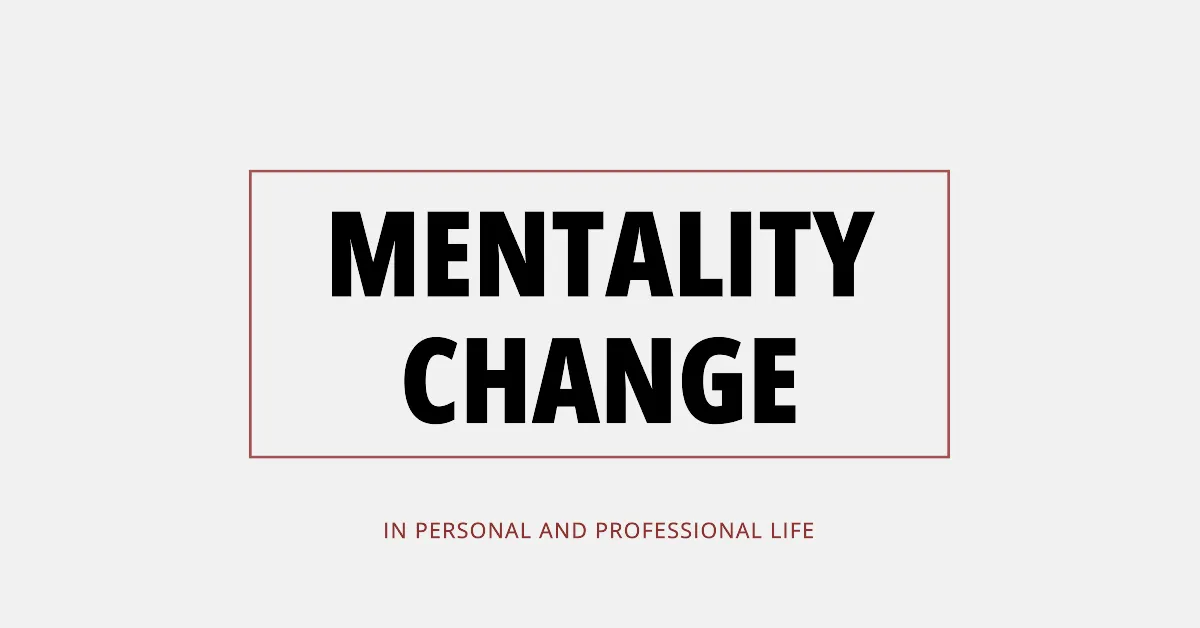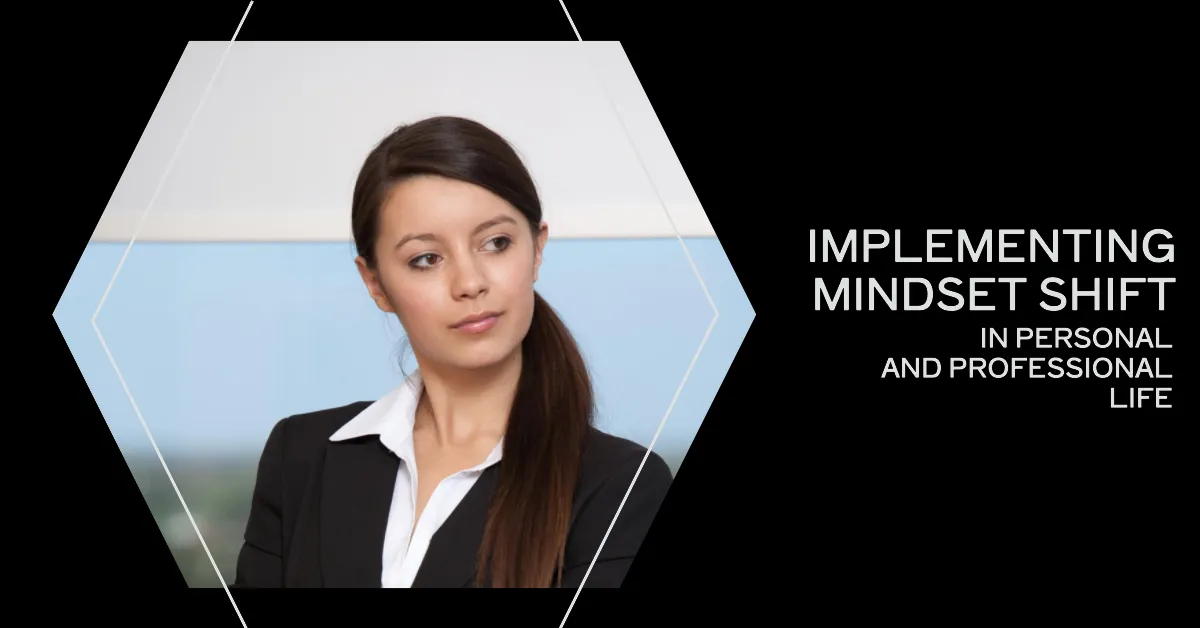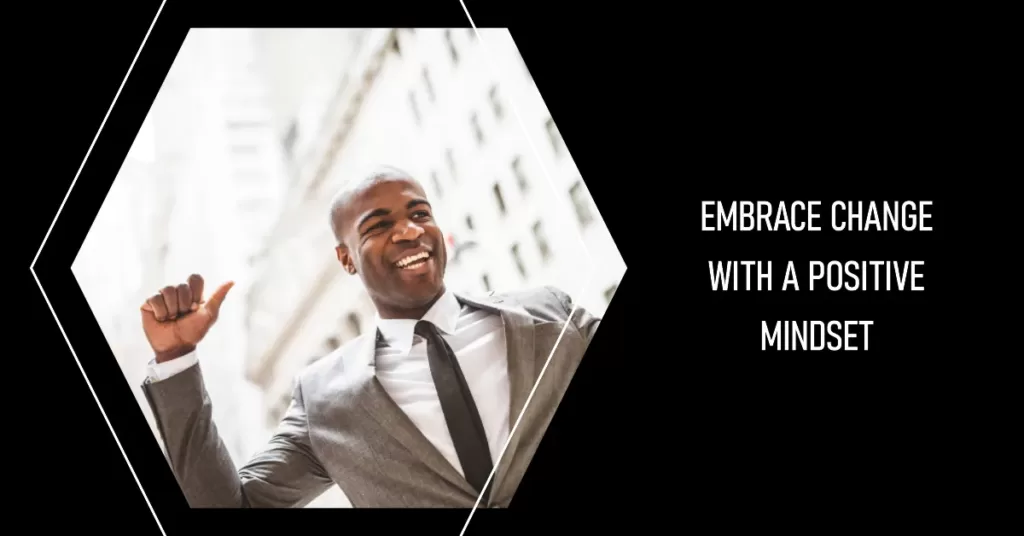Are you tired of feeling stuck in your personal or professional life? Do you find yourself constantly struggling to make progress and achieve your goals? It’s time for a mindset shift. Mentality change management is not just about implementing new strategies or processes, it’s also about changing the way you think and approach challenges, monitoring their effectiveness, and consciously managing the process. By shifting your mindset, you can unlock new opportunities, increase productivity, and ultimately achieve greater success.
In this article, we will explore the importance of mindset in change management and how to identify limiting beliefs and negative thought patterns that may be holding you back. We’ll then delve into developing a growth mindset, setting realistic goals, creating action plans, and implementing mindset shifts both in your personal and professional life. Finally, we’ll discuss the importance of maintaining and sustaining these shifts over the long term for lasting change. With the right change management strategy in place, you can break free from old habits and limitations to achieve the freedom you desire.
Table of Contents
- 1 Key Takeaways
- 2 The Importance of Mindset in Managing Mentality Change
- 3 Identifying Limiting Beliefs and Negative Thought Patterns
- 4 Developing a Growth Mindset
- 5 Setting Realistic Goals and Creating Action Plans
- 6 Implementing Mindset Shifts in Your Personal and Professional Life
- 7 Maintaining and Sustaining Mindset Shifts over the Long Term
Key Takeaways
- Developing a growth mindset involves embracing challenges and opportunities for learning.
- Communicating the benefits of change and involving everyone in the decision-making process can increase support for change.
- Consistency, support systems, and celebrating small wins are important for sustaining a mindset shift.
The Importance of Mindset in Managing Mentality Change

Let’s talk about something serious. It’s a concept you may or may not be familiar with: mentality change. You know, those times when your thoughts, beliefs, or attitudes take a big shift? Well, managing those changes in a positive and beneficial way is critical, and your mindset plays a significant role in this. Buckle up, because we’re about to delve into why this process is so vital.
What is Mentality Change
Ever had those moments when you suddenly saw the world through a different lens? Or when you noticed a new facet about yourself you never acknowledged before? Then chances are, you’ve experienced a mentality change. A mentality change is all about those shifts in your beliefs, attitudes, or ways of thinking. Sometimes it’s due to life events, personal growth, or maybe even a really good book you’ve read. The key point is: once it happens, you never see things the same way again. It’s like upgrading your brain’s software.
What is Mentality Change Management
So, let’s take this mentality change concept a notch higher. It’s one thing to undergo a shift, but it’s a whole other thing to manage and navigate it effectively. Mentality change management is the process of consciously regulating and guiding these changes in your thoughts, attitudes, and beliefs. This doesn’t mean manipulating or denying change, but rather going along with it in a way that benefits your growth and wellbeing. Think of it as the reins to your mental horse. You can’t control where the horse wants to go, but you can guide it to safer paths.
Why is Mindset Important When Managing Changes in Your Overall Mentality
Alright, now you’re probably wondering where mindset comes in, right? Your mindset is essentially your internal compass, your thought pattern that decides how you perceive and respond to situations. Picture this: if your mindset is not open to change, you might find yourself resisting any shifts in your mentality, causing stress and discomfort. If your mindset is flexible and adaptive, however, you are more likely to see a mentality change as an opportunity for growth and learning, even if it initially seems uncomfortable.
So, the tools to manage your mentality change effectively live right within your mind. It all boils down to having a growth-oriented, adaptable mindset. This can make your journey through mentality change less of a bumpy ride and more of a self-exploration adventure. Keep in mind, it’s okay to feel lost and uncertain sometimes. The key is to remember that every mentality change is a step toward becoming a better version of yourself. So be patient, and most importantly, be open to change.
Identifying Limiting Beliefs and Negative Thought Patterns
Recognizing negative thought patterns can help you break free from self-imposed limitations and achieve your full potential.
Here are four ways to identify limiting beliefs and negative thought patterns:
- Pay attention to your inner dialogue: What do you say to yourself when faced with a challenge or opportunity? Do you automatically assume the worst-case scenario, or do you approach challenges with a positive attitude?
- Examine your past experiences: Have there been times when limiting beliefs held you back? Did negative self-talk prevent you from achieving your goals? By reflecting on past experiences, you can identify patterns that may be holding you back in the present.
- Seek feedback from others: Sometimes we are blind to our own negative thought patterns, so it can be helpful to ask for feedback from friends, family members, or colleagues who know us well.
- Challenge your assumptions and beliefs: Once you have identified a limiting belief or negative thought pattern, challenge it! Ask yourself if it is really true or if there is evidence to the contrary. By questioning these assumptions, you can start to break free from them and create new, more empowering beliefs.
By identifying limiting beliefs and negative thought patterns, you can begin to shift your mindset toward one of growth and possibility. This requires a willingness to examine our own thoughts and behaviors honestly and make changes where necessary. While this process may be uncomfortable at times, the reward is worth it – greater freedom, creativity, and success in all areas of life.
Ultimately, mindset shift is about recognizing that our thoughts shape our reality – both personally and professionally – and taking intentional steps toward cultivating a more positive outlook on life. With practice and perseverance, we can transform our limiting beliefs into powerful catalysts for growth and progress toward our desired future state of being truly free in mind & soul!
Developing a Growth Mindset

In developing a growth mindset, you must embrace challenges and see them as opportunities for learning. You need to cultivate resilience by bouncing back from setbacks and persisting toward your goals, even in the face of obstacles. Adopting this mindset means seeing failures as valuable lessons that help you grow and improve, rather than as permanent markers of your abilities or worth.
Embracing Challenges and Learning Opportunities
Embracing challenges and learning opportunities can lead to significant growth in both personal and professional aspects. Individuals who regularly seek out new challenges are more likely to be successful in their careers. This is because facing obstacles and pushing yourself out of your comfort zone helps you develop resilience, adaptability, and problem-solving skills.
When you embrace challenges with a growth mindset, you view them as opportunities for learning rather than threats to your abilities. This shift in perspective allows you to approach difficult situations with curiosity and openness, enabling you to gain new insights and knowledge that can help you achieve your goals. By seeking out new experiences and challenges, you also expand your comfort zone, which allows you to take on bigger challenges with confidence in the future. Embrace the unknown and find joy in the process of learning – this will allow you to unlock your full potential!
Cultivating Resilience and Persistence
When things get tough, it’s important to keep pushing forward and never give up. Cultivating resilience and persistence will help you overcome obstacles and stay motivated in the face of challenges. Resilience involves bouncing back from setbacks, while persistence means staying committed to your goals even when progress is slow or difficult.
To cultivate resilience and persistence, it’s important to focus on developing a growth mindset. This means seeing challenges as opportunities for learning and growth rather than as threats to your self-esteem or abilities. In addition, it’s helpful to set realistic goals that are challenging but achievable, break tasks down into manageable steps, and celebrate small wins along the way. The following table provides additional strategies for cultivating resilience and persistence:
| Strategy | Description | Example |
|---|---|---|
| Reframe challenges as opportunities | See setbacks as chances for growth and learning rather than failures or personal shortcomings | “I didn’t get the promotion I wanted, but I learned valuable skills that will help me succeed in my next job.” |
| Practice self-compassion | Treat yourself with kindness and understanding when facing difficulties or setbacks; avoid harsh self-criticism or negative self-talk | “It’s okay that I made a mistake – everyone does sometimes. What can I do differently next time?” |
| Seek support from others | Reach out to friends, family members, colleagues, mentors, or coaches who can offer encouragement, feedback, advice, or accountability | “I’m struggling with this project – can you give me some advice on how to approach it?” |
| Stay focused on your values and purpose | Connect with what matters most to you in life; use your values and purpose as sources of motivation during difficult times; remember why you started pursuing your goal in the first place | “Even though this is hard work, it’s worth it because I’m making a difference in people’s lives.” |
By implementing these strategies consistently, you can cultivate a mindset of resilience and persistence that will help you overcome challenges, achieve your goals, and experience greater freedom in your personal and professional life.
Setting Realistic Goals and Creating Action Plans

When setting realistic goals, it’s important to break them down into manageable steps. This will help you feel less overwhelmed and more in control of your progress. Additionally, building accountability and support systems can provide the extra push you need to stay on track and achieve your desired outcomes. So keep these key points in mind as you create action plans for achieving your goals – they’ll help you stay focused, motivated, and successful in the long run.
Breaking Down Goals into Manageable Steps
By breaking down your goals into manageable steps, you can increase your chances of achieving them and avoid feeling overwhelmed. Instead of focusing on the end result, try to break down the goal into smaller parts that you can accomplish in a reasonable amount of time. This will help you stay motivated and make progress toward your ultimate goal.
To break down your goals into manageable steps, consider the following:
- Identify specific actions or tasks needed to achieve the goal;
- Prioritize those actions based on their importance or urgency;
- Set deadlines for each action to keep yourself accountable;
- Celebrate small accomplishments along the way to stay motivated.
By taking these steps, you can turn a daunting goal into a series of achievable milestones. Remember, success is not always about making huge leaps forward; sometimes it’s about taking consistent and deliberate steps toward your desired outcome.
Building Accountability and Support Systems
Now that you’ve broken down your goals into manageable steps, it’s time to build accountability and support systems. Achieving your goals requires more than just willpower and determination; it also requires a strong support system that can help you stay accountable and motivated.
An effective way to build accountability is by finding an accountability partner. This could be a friend, family member, or colleague who is also working toward their own goals. By checking in with each other regularly and holding each other accountable for progress, you can stay on track and avoid falling off the wagon. In addition to an accountability partner, consider joining a group or community of like-minded individuals who are also striving toward similar goals. This kind of support system can provide valuable encouragement, feedback, and motivation as you work toward achieving your own aspirations.
Implementing Mindset Shifts in Your Personal and Professional Life

To implement mindset shifts in your personal and professional life, you will need to overcome resistance to change. This may involve taking small steps toward your goals, being open-minded to new ideas and perspectives, and seeking support from others. Practicing mindfulness and self-reflection can also be helpful tools in shifting your mindset, helping you to stay focused on your goals and remain resilient in the face of challenges.
Overcoming Resistance to Change
Overcoming resistance to change is like navigating a stormy sea, where the crew of your team must work together to steer the ship toward calmer waters. It can be difficult to convince people to embrace new ideas and ways of doing things, especially when they are comfortable with their current processes. However, it is crucial for leaders to overcome this resistance in order to implement necessary changes.
Here are three strategies for overcoming resistance to change:
- Communicate the benefits: People are more likely to accept change if they understand how it will benefit them. Clearly communicate the reasons behind the change and how it will improve their work or personal lives.
- Involve everyone in the process: When people feel like they have a say in decisions that affect them, they are more likely to support those decisions. Involve all stakeholders in brainstorming sessions and decision-making processes.
- Lead by example: As a leader, you need to model the behavior you want others to adopt. Embrace the changes yourself and show others how they can do so as well. By leading by example, you can inspire others to do the same and create a culture of openness and adaptability within your team or organization.
Practicing Mindfulness and Self-Reflection
Take a moment each day to practice mindfulness and reflect on your actions and emotions. This is an important step when managing changes in your life, career, or mentality. By being mindful, you can become more aware of how you react to certain situations and identify any patterns or habits that may be holding you back from embracing change.
Self-reflection also plays a crucial role in this process. Take the time to ask yourself questions such as “Why am I resistant to this change? “or “What fears or beliefs are driving my resistance?” By understanding your own thought processes, you can begin to challenge any limiting beliefs and reframe them in a way that supports your goals for change. Remember, developing a growth mindset is all about becoming more self-aware and taking deliberate steps toward positive transformation.
Maintaining and Sustaining Mindset Shifts over the Long Term
You can’t afford to let your mindset shift fade away. To maintain and sustain your mindset shift, you must first acknowledge that it is a continuous process. A one-time change won’t cut it. You need to be committed to the new way of thinking and adopt it as a part of your lifestyle.
Here are three practical tips for maintaining and sustaining your mindset shift:
- Practice consistency: Consistency is key when it comes to changing habits. Keep reminding yourself of why you made the change in the first place and stay committed to it every day. Create daily or weekly routines that align with your new mindset so that you can build momentum toward achieving long-term success.
- Surround yourself with like-minded individuals: The environment plays a significant role in shaping our thoughts and actions. If you surround yourself with people who have similar mindsets, they will help reinforce your new way of thinking and support you through the journey.
- Celebrate small wins: It’s crucial to celebrate small wins along the way rather than waiting for a big achievement. This helps keep you motivated and encourages continued progress toward achieving long-term goals.
Remember, maintaining and sustaining your mindset shift isn’t easy; there will be challenges along the way. But, by adopting these tips into your daily life, you’ll increase the likelihood of achieving lasting success in both personal and professional aspects of life. Don’t give up on creating a better version of yourself; freedom from old patterns is possible if you stay focused on making those small changes every day!




